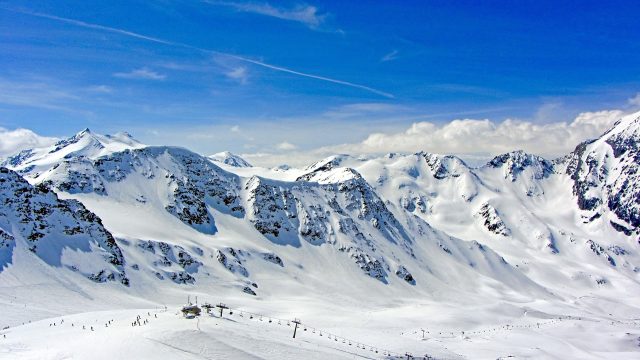
Every year, the Italian ski resorts consume about almost one hundred million cubic meters of water.
According to the report “NEVEDIVERSA 2023. Winter Tourism in the Era of the Climate Crisis”, due to the rise in temperatures in recent years, the public administration has had to face huge investments relating to new technologies and energy consumption, necessary for the functioning of the ski resorts, otherwise destined to inevitable seasonal closures. Diversifying winter tourism with the integration of other mountain-related activities would seem to be one of the most effective solutions to avoid the total crisis of mountain accommodation facilities.
The percentage of artificial snow used, especially in this last winter, on all European slopes, is extremely high and sees Italy in first place with 90%, followed by Austria with 70%, Switzerland with 50% and France with 39%, thus describing a very serious situation worthy of particular attention from the institutions, for the safeguarding of a tourism sector, the winter one, which includes a significant induced activity. The recorded consumption of non-natural snow foresees a very high cost by public bodies and an unsustainable expenditure of energy which is more difficult to manage by the plants themselves. While in the past decades artificial snow served only as a support for the natural one on the hottest days, now it is the only solution to allow the opening of most of the Italian ski resorts.
Legambiente has recorded an annual water consumption, by artificial snow systems, comparable to that of an entire city of one million inhabitants, to which must be added the very high cost for the technological updating of the systems. Due to a constant rise in temperatures, in recent years, the problem of water supply throughout Europe and especially in Italy has become long-standing and the search for a solution becomes a priority.
According to analysts, the snow itself has changed over the years and now it falls, heavier and less consistent, almost exclusively at very high altitudes so as to allow, in the near future, access to the ski lifts only to a very small user base, able to bear the relative maintenance costs of the ski lifts and snowmaking. In this regard, there are numerous requests from workers in the mountain tourism sector to diversify the activities that can be practiced at high altitudes, inaugurating a new cultural approach towards the mountains. Skiing activity cannot be considered the main attraction for winter tourists, any longer and infrastructures are running for cover.
To fill the economic gaps relating to the protection of the winter tourism sector, the Italian Minister of Tourism Daniela Santanchè, has asked to release part of the funds allocated for the pandemic crisis of recent years and not usable for other purposes, to set up safety funds for workers of the snow sector and address the technological updates necessary to guarantee artificial snow and allow the reopening of the ski structures that would otherwise be destined to be definitively closed. In addition to the creation of new funds for seasonal mountain workers, a more radical alternative is also being requested to solve the problem and which consists in the promotion of a new concept of winter tourism, so as to also avoid further and increasingly high water consumption and in contrast with an ever-increasing water needs from the agri-food sector which is asking for a more logical division.
By now, the ski tourism structures, especially in central and southern Italy, are at risk of closure while others are benefiting from large injections of public money, not always justified, to allow them to operate. In recent ski seasons, many lifts have opened in fits and starts, thus worsening their economic situation and considerably increasing energy consumption.



 Subscribe
Subscribe